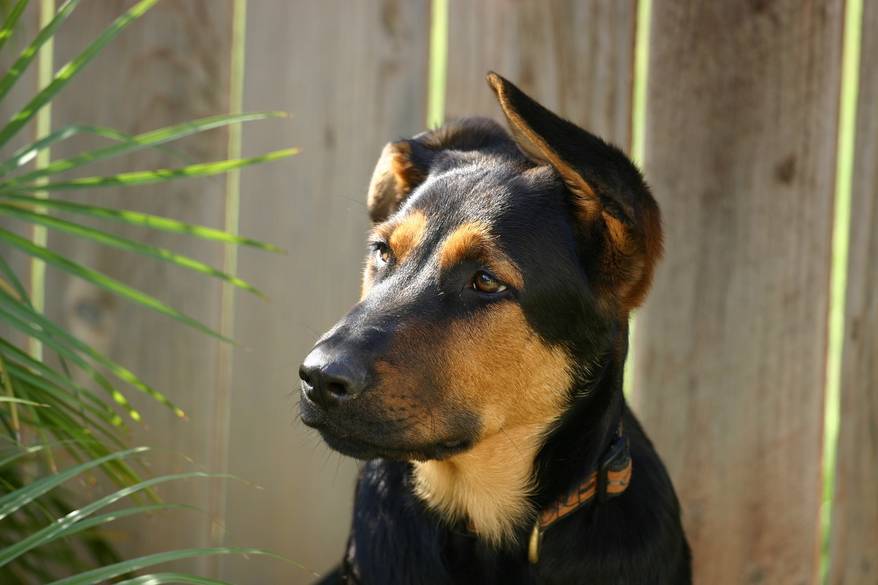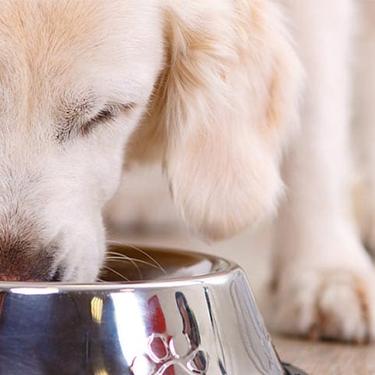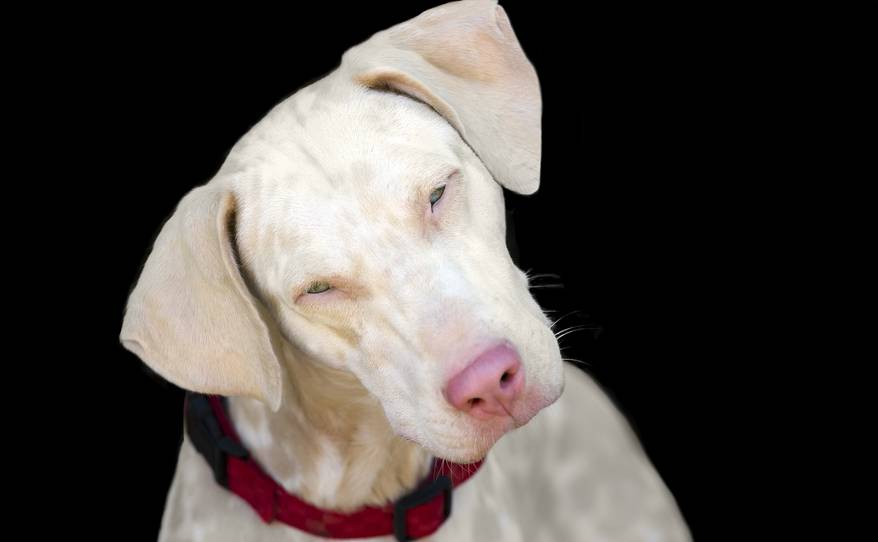
-
Find the right food for your pet
Take this quiz to see which food may be the best for your furry friend.
Find the right food for your pet
Take this quiz to see which food may be the best for your furry friend.
Featured products
 Small & Mini Savory Stew with Chicken & Vegetables Dog Food
Small & Mini Savory Stew with Chicken & Vegetables Dog FoodA delicious complement to the nutrition of Science Diet Small & Mini 7+ dog food
Shop Now Adult 7+ Perfect Digestion Chicken, Whole Oats & Brown Rice Recipe Dog Food
Adult 7+ Perfect Digestion Chicken, Whole Oats & Brown Rice Recipe Dog FoodScience Diet's breakthrough nutrition supports ultimate digestive well-being & healthy microbiome for dogs age 7+
Shop Now Adult Healthy Cuisine Roasted Chicken, Carrots & Spinach Stew Dog Food
Adult Healthy Cuisine Roasted Chicken, Carrots & Spinach Stew Dog FoodDelicious roasted chicken paired with tender vegetables in a succulent stew
Shop NowFeatured products
 Adult 7+ Senior Vitality Chicken & Vegetable Stew Cat Food
Adult 7+ Senior Vitality Chicken & Vegetable Stew Cat FoodImproves Everyday Ability to Get Up & Go
Shop Now Adult Savory Entrée Can Variety Pack Cat Food
Adult Savory Entrée Can Variety Pack Cat FoodPrecisely balanced nutrition with the delicious taste of savory minced chicken to help fuel the energy needs of cats during the prime of their life
Shop Now Adult 7+ Tender Tuna Dinner Cat Food
Adult 7+ Tender Tuna Dinner Cat FoodWith delicious chunks in a decadent gravy
Shop Now -
Dog
- Dog Tips & Articles
-
Health Category
- Weight
- Food & Environmental Sensitivities
- Urinary
- Digestive
- Joint
- Kidney
-
Life Stage
- Puppy Nutrition
- Adult Nutrition
- Senior Nutrition
Cat
- Cat Tips & Articles
-
Health Category
- Weight
- Skin & Food Sensitivities
- Urinary
- Digestive
- Kidney
-
Life Stage
- Kitten Nutrition
- Adult Nutrition
Featured articles
 Why Are Dogs and Cats So Cute?
Why Are Dogs and Cats So Cute?If waggy puppy dog tails and furry kitten yawns make you swoon, you're not alone. Why are cats so cute? And, dogs too! Let's find out!
Read More Does My Pet Hate Me?
Does My Pet Hate Me?Learn tips for bonding with your pet if you've ever thought, 'My dog doesn't like me, or 'Why do I have a standoffish cat?'
Read More Do Dogs and Cats have Belly Buttons?
Do Dogs and Cats have Belly Buttons?Learn whether cats & dogs have belly buttons like humans, what the function is, and if there are any health concerns associated with it.
Read More -


Has your dog suddenly developed a lopsided smile? Facial paralysis in dogs is a condition that is characterized by changes in your dog's expression and facial control. If your dog is looking like a canine Harvey Dent, don't worry. Most cases have a favorable outcome even if some dogs require extra care following their diagnosis. Read on to learn about the causes and management of this condition.

Causes of Facial Paralysis
Facial paralysis results from damage to a facial nerve called cranial nerve VII. This nerve is connected to the muscles that control your dog's eyelids, lips, nose, ears and cheeks, and when it's damaged a portion of his face can appear frozen or droopy. The effects of nerve damage may persist for an extended or indefinite period of time.
Cocker spaniels, beagles, corgis and boxers are more frequently affected during their mature years compared to other breeds. Depending on the underlying cause, temporary facial paralysis in dogs can last several weeks. Possible causes of facial paralysis include:
- Middle and inner ear infections
- Trauma to the head
- Endocrine disorders (hypothyroidism, diabetes mellitus, Cushing's disease)
- Toxins, including botulism, which is used to synthesize Botox and which dogs can get from eating raw meat, according to Wag!
- Tumors, especially growths that invade or compress cranial nerve VII or the brainstem
Surprisingly, the majority of cases of facial paralysis in dogs are idiopathic and not traceable to a specific cause. A slim margin can also be iatrogenic, or accidentally caused during surgery.
Signs
Depending on the underlying cause, the signs of facial paralysis in dogs can manifest on one or both sides of the face. Pet parents familiar with Bell's Palsy, a form of facial paralysis in people that the Mayo Clinic notes also includes nerve damage, will notice a similar change in the appearance of their dog's face. The common signs of damage to cranial nerve VII include:
- Drooling (the facial nerve also controls the salivary glands)
- Drooping of the lip and ear
- Deviation of the nose toward the unaffected side
- Inability to blink and close the affected eye
- Sloppy eating, dropping food from mouth
- Eye discharge
If you suspect your dog has facial nerve paralysis, contact your veterinarian. They will perform a comprehensive physical exam of your dog's eyes, ears and motor coordination and check for other cranial nerve and systemic neurological problems.
Looking Out for Dry Eye
An important part of your vet's exam will be testing your dog's ability to blink with the eye on the affected side of his face. Pet Health Network notes that a significant risk of facial nerve paralysis in dogs is keratoconjunctivitis sicca, commonly known as dry eye. This condition develops when a dog can't produce enough tears or close the affected eye.
Your vet may conduct an exam called the Schirmer tear test to see if your dog's eyes are producing enough lubrication. They may prescribe artificial tears since dogs with dry eye are at risk for developing corneal ulcers.


Tasty Tips
Other Assessments
Besides a thorough exam of your dog's eyes, the vet will also closely evaluate his ear canals. From their point of origin in the brain, the fibers of cranial nerve VII run close to the middle ear on their way to the face. An ear canal exam helps rule out an external ear infection, but in order to definitively determine if middle or inner ear or brain disease exists, CT or MRI scans are often needed.
Some cases also impact cranial nerve VIII, the vestibulocochlear nerve, which lies in close proximity to cranial nerve VII. Cranial nerve VIII transmits both sound and information about the body's sense of balance from the ear to the brain. Veterinary Partner notes that a disruption of cranial nerve VIII causes vestibular disease, which manifests as an unsteady gait, weakness, head tilt and nystagmus (abnormal eye movement).
Although the underlying cause of most cases of facial paralysis in dogs remains unknown, your dog's vet might recommend blood work to rule out other conditions. Other tests they might prescribe include a complete blood count, a chemistry profile and a thyroid function profile, which are helpful in evaluating various hormonal disorders associated with facial paralysis.
Treatment
Idiopathic facial paralysis in dogs does not have a prescribed treatment except for supportive care. An important part of caring for your pup is avoiding the complications related to dry eye and the inability to blink. If your vet prescribes artificial tears to keep the affected cornea lubricated, administering drops several times daily is critical for preventing infection and corneal ulceration. Since you cannot rely on your dog to squint with pain due to a corneal ulcer, pay close attention for any redness around his eye and seek veterinary care if you suspect a problem. Untreated corneal ulcers can be very serious.
In case of an ear infection, your dog will need a course of antibiotics and sometimes surgical intervention. If blood tests reveal an underlying disease or if a tumor is found on imaging tests, you and your vet can discuss ways to manage the underlying problem.
Uncomplicated facial paralysis in dogs is not typically life-threatening. Even dogs who are challenged by facial paralysis and vestibular disease often make a full recovery. Although idiopathic facial paralysis can be aesthetically disconcerting for pet parents, rest assured, it is not a painful condition for your dog. If you notice any problems, contact your vet. Immediate attention will ensure peace of mind and the optimal care for your pup.


Mindy Cohan is a veterinarian in the Philadelphia area and a graduate of the University of Pennsylvania School of Veterinary Medicine. She has a rescue dog named Jem. Mindy enjoys hiking with Jem while listening to podcasts about the American Civil War and Abraham Lincoln.
Related products
Related articles

Proper nutrition for your pregnant or nursing dog is vital to her and her puppy's health. Learn what you should do provide her with the proper nutrients.

Learn about choosing the right dog food to help ensure your adult dog will receive the correct balance of nutrition.

Learn the the dangers of feeding your dog chocolate, which types are most dangerous, and what to do if you discover that they have consumed chocolate.

Learn how today's wet dog food blends have gotten a face lift, and how you'll provide your dog the nutrition he needs in the form he loves.

Put your dog on a diet without them knowing
Our low calorie formula helps you control your dog's weight. It's packed with high-quality protein for building lean muscles, and made with purposeful ingredients for a flavorful, nutritious meal. Clinically proven antioxidants, Vitamin C+E, help promote a healthy immune system.
Put your dog on a diet without them knowing
Our low calorie formula helps you control your dog's weight. It's packed with high-quality protein for building lean muscles, and made with purposeful ingredients for a flavorful, nutritious meal. Clinically proven antioxidants, Vitamin C+E, help promote a healthy immune system.


